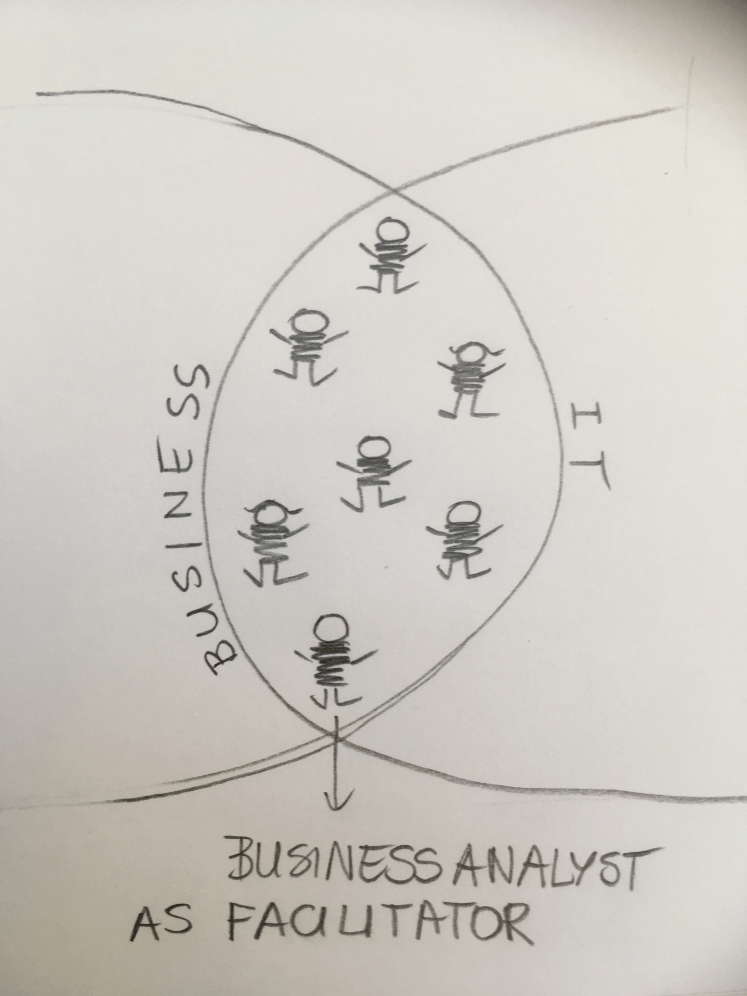
Lost in translation? Try design thinking! Part 2
12 October 2016
Lean Thinking for Business Analysis
1 March 2017A simple Google search on the “importance of business analysis” delivers 6,120,000 results: articles, presentations and interviews proving the pivotal role of this disciple in every organisation. How could you disagree, when you read this definition?
Business analysis is the practice of enabling change in an enterprise by defining needs and recommending solutions that deliver value to stakeholders. Business analysis enables an enterprise to articulate needs and the rationale for change, and to design and describe solutions that can deliver value. [source: BABoK v3]
It is important to help organisations deliver value to stakeholders and guide them through this process, isn’t it? History shows that organisations that neglect change suffer heavily. Lack of responsiveness to what is happening around them may threaten the companies’ existence. Remember what happened with giants like Kodak or Blackberry? Business author Alan Deutschman puts it simply:

“Change or die”
Nowadays, many organisations decide to implement agile frameworks, for example SCRUM, hoping these new frameworks will help them become more responsive and open to change. Have you noticed that none of them (except SAFe) mention the role of a business analyst? Does this mean that business analysis is not needed? No! I think that we can all agree that business analysis activities are more relevant than ever for contemporary enterprises, but do we need a business analyst?
Business analysts are given a lot of responsibility for a proper translation of business needs to solutions that deliver value to stakeholders. It is a lot to put in the hands of one professional or a small team. Should one person or small group decide what the future will look like based on the inputs of others? Many call business analysts a bridge between business and IT. The definition of a bridge states that it spans and provides passage over a river, chasm, road or similar. This is its positive characteristic, but it also has a negative aspect: a bridge is a bottleneck!

I think that you also have to deal with situations in your organisation where the business just forgot to involve business analysts in the early stage of the project. Sometimes businesses do their own research or studies communicating the results to business analysts in the latter stage of a project. Business analysts are not always seen as the same breed, to the big frustration of BA leads and managers who fight to get them recognised. From the organisation’s point of view it is better to put business analysts into one group (read: silo), but does it help the business if they have to “hire” a business analysis professional from another group?
In November, 2016 the Dutch chapter of IIBA held its yearly event. During this event a debate was organised to check what our members (primarily business analysts) think of the necessity of a business analyst’s role. They agreed that the business analysis tasks cannot be ignored in organisations; however, a person who performs these tasks doesn’t necessarily need the title of a business analyst. Actually, many roles in an organisation deal with business analysis tasks. This confirms the behaviour of the business from the previous paragraph.
The IIBA NL members agreed that business analysts have very dedicated skills that allow them to perform the tasks very efficiently. But be honest, in many cases business people are not good at identifying where they can improve, how to go about change, or even how to identify what process they do undertake. They often, however, identify the need for change but will usually struggle to articulate what this change will look like. So someone with business analysis skills could be helpful here to assist the business in discovering what is needed. But is it unique to keep the role?
The IIBA NL members saw the future of business analysts in coaching and facilitating organisations and their employees so they become capable of performing business analysis tasks properly. This conclusion conforms to the statement of Maritza Guaderrama, the managing director of the design company, DesignIt. She also said in the interview that organisations do not lack the knowledge to solve their problems – organisations have all the knowledge needed to solve the problem! But they need facilitation. Facilitation is a key factor in helping organisations to think together and make decisions quickly. As a facilitator and coach business analysts do not work from the organisational silo, but commit to bringing people together. My attempt to visualise this is included below:

I must say we face very interesting times, where the traditional role of a business analyst struggles, especially in agile frameworks. Agile teams are also equipped in the business analysis skill set. Do we need a dedicated bridge: a business analyst sitting between business and IT? Is this a bottleneck we should eliminate if we want to foster better communication and collaboration? Is it better to allow more roles to contribute to business analysis, step back and help them successfully embrace the business analysis skills? Does the future of business analysts lie in facilitation and coaching? I believe it does: business analysts need to change or they will become extinct.





